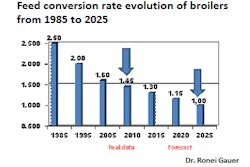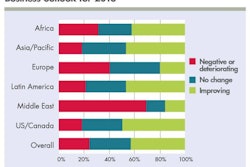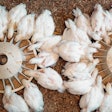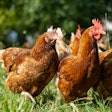Respondents to the Poultry Confidence Index survey remained optimistic about lower grain prices, restrained production and higher beef prices, continuing the positive outlook from the previous quarter.
Most Poultry Confidence Indices remain high
Although most of the survey’s indices declined slightly from last quarter, they remained historically high and well above the norm of 100. The Overall Index decreased slightly from 140.0 to 130.0 (1996=100). The Present Situation Index fell from 144.2 to 133.9, and the Expectations Index slid slightly downward from 137.2 to 127.4
The Broiler Market Index increased to 153.5 from 120.5, and the Turkey Market Index held steady at 123.8 compared to 118.1 in the previous quarter.
Consumer confidence has followed a similar trend. Although the Consumer Confidence Index pulled back slightly in July, it has been steadily improving over the last year. Overall, consumers feel that the economy is strengthening and should improve in the months ahead.
The one area of mild concern for both consumers in general and Poultry Confidence Index survey respondents was the labor market. Consumers expect fewer jobs in the months ahead while the Future Opportunities Index fell 36 points since last quarter (but remained well above the 100-point norm).
Although optimism abounds, there are a couple of concerning areas:
- The continued drought could reduce grain forecasts. Acreage and yield estimates suggest that U.S. farmers will harvest the largest crop ever this fall (25 percent higher than a year ago). However, a sustained drought still covers a large portion of the U.S. In addition, demand for ethanol will only increase with cheaper corn. Although current predictions are likely to be in the ballpark, recall that last year’s forecasts turned unfavorable by the end of the season.
- Increasing production could lower prices and reduce profits. Broiler placements in mid-August were up 2 percent compared to a year ago, while egg sets were up 5 percent. This will likely lead to more poultry meat on the market during the fourth quarter. One economist has forecast near-record levels of poultry production during 2014. In addition to more birds, live weights were up 2 percent in July compared to a year ago. Holding all else equal, the result will be a reduction in Georgia Dock Prices that have been running 11 percent to 12 percent higher than last year.
One area unlikely to change is comparatively higher beef prices. With the voluntary suspension of Zilmax by Merck – which boosts carcass weights and lean-meat yields – beef production is likely to decrease somewhat given the same number of head.
The poultry industry is poised for a period of sustained confidence. However, situations can change rapidly in a commodity-like market. The lingering, widespread drought could lead to higher-than-expected grain prices while increases in broiler output (sets, placements and weights) could dampen historically high prices.

















